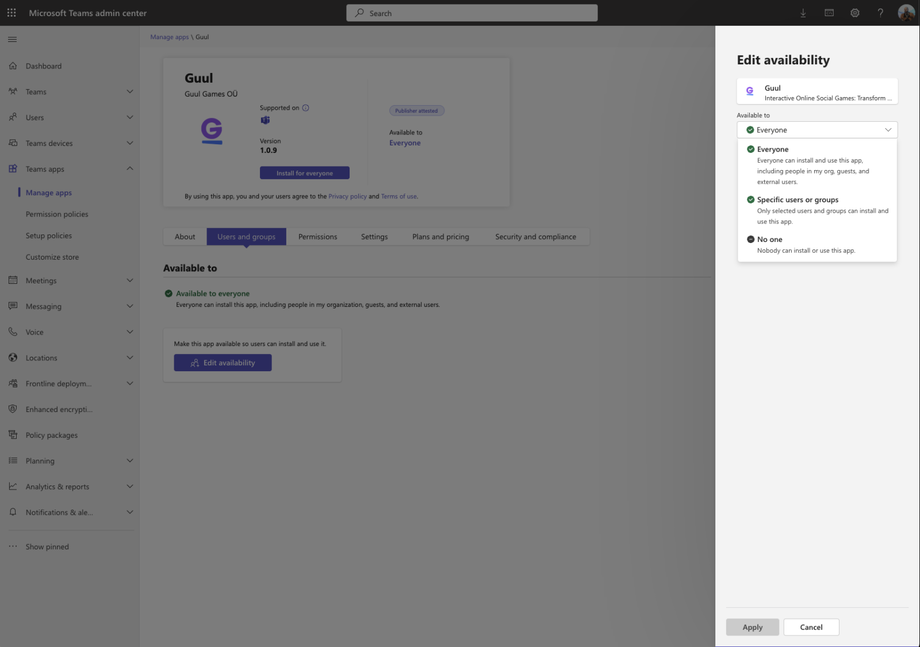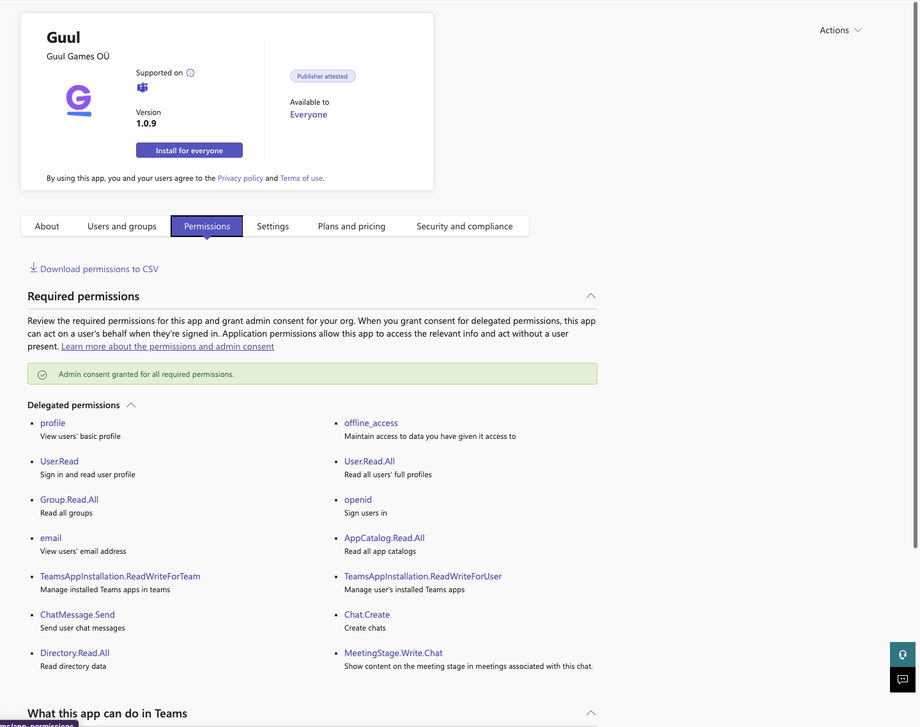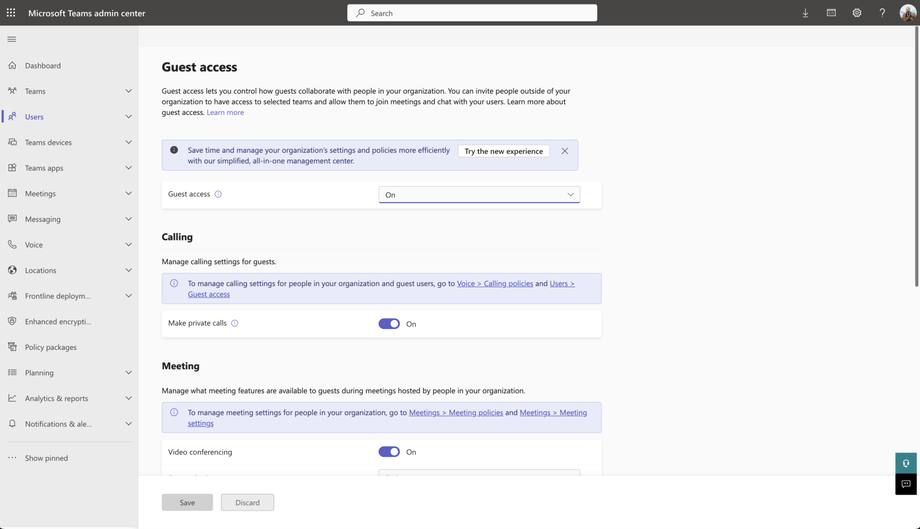Microsoft Teams offers different user levels based on licensing and access permissions. To ensure that all users, including guests and anonymous attendees, can fully utilize GUUL in your workplace, follow this step-by-step guide to configure your Microsoft Teams admin settings.
Understanding Microsoft Teams User Levels
Microsoft Teams categorizes users into four main levels, each with different access permissions:
Full Members
- These are licensed Teams users within your Microsoft Azure tenant.
- They have full access to all features and apps, including GUUL, as long as no restrictions are applied.
External Users
- These are guest users who belong to another Microsoft Azure tenant.
- They have access to your workplace but are licensed under a different organization’s Microsoft Teams environment.
- They can interact with Teams apps based on the permissions set in your organization’s policies.
Guest Users
- These are guest users with no link to any Microsoft Azure tenant.
- They may include external collaborators or consultants using non-corporate email domains (e.g., Gmail, Yahoo, or personal emails).
- Their ability to use Teams apps depends on how your organization’s Teams policies are configured.
Anonymous Users
- These are meeting attendees who join via a public link and do not sign in to Microsoft Teams.
- Their interactions with Teams apps, including GUUL, are highly restricted unless explicitly allowed in the admin settings.
Configuring Microsoft Teams Admin Settings for GUUL Access
To ensure all intended users can access and interact with GUUL in Microsoft Teams, follow these steps in the Microsoft Teams Admin Center:
Enable GUUL for All Teams in Your Workplace
Navigate to Manage Apps:
- Sign in to the Microsoft Teams Admin Center.
Go to Teams apps > Manage apps.
Allow GUUL App:
- Search for “GUUL” in the app list.
Ensure its status is set to “Allowed.”
For detailed guidance, refer to Manage app permission policies in Microsoft Teams.
Grant App Access for Guest & External Users
Guest and external users may have limited permissions based on your organization’s policies. To enable their access:
Configure Guest Access:
- In the Teams Admin Center, go to Users > Guest access.
- Set Allow guest access in Teams to On.
- Under Calling, Meeting, and Messaging, enable desired capabilities for guests.
For comprehensive instructions, see Turn guest access in Microsoft Teams on or off and Manage external meetings and chat with people in other organizations.
Enable App Access for Anonymous Users in Meetings
Adjust Meeting Settings:
- In the Teams Admin Center, go to Meetings > Meeting settings.
- Under Participants, set Anonymous users can join a meeting to On.
For more information, refer to Manage anonymous participant access to Teams meetings.
Troubleshooting & Best Practices
- If users report issues accessing GUUL, ensure they are signed in and not restricted by IT policies.
- Regularly review app permissions to prevent accidental restrictions on guest or external users.
- Encourage team admins to test GUUL with different user levels (Full Members, External, Guest, and Anonymous) before deploying it company-wide.
- Use Microsoft Teams Policies > App Setup Policies to pin GUUL in Teams for easier access.
By following these steps, you can ensure a seamless experience for all users, regardless of their Microsoft Teams access level. If you need further assistance, feel free to reach out to GUUL Support.





